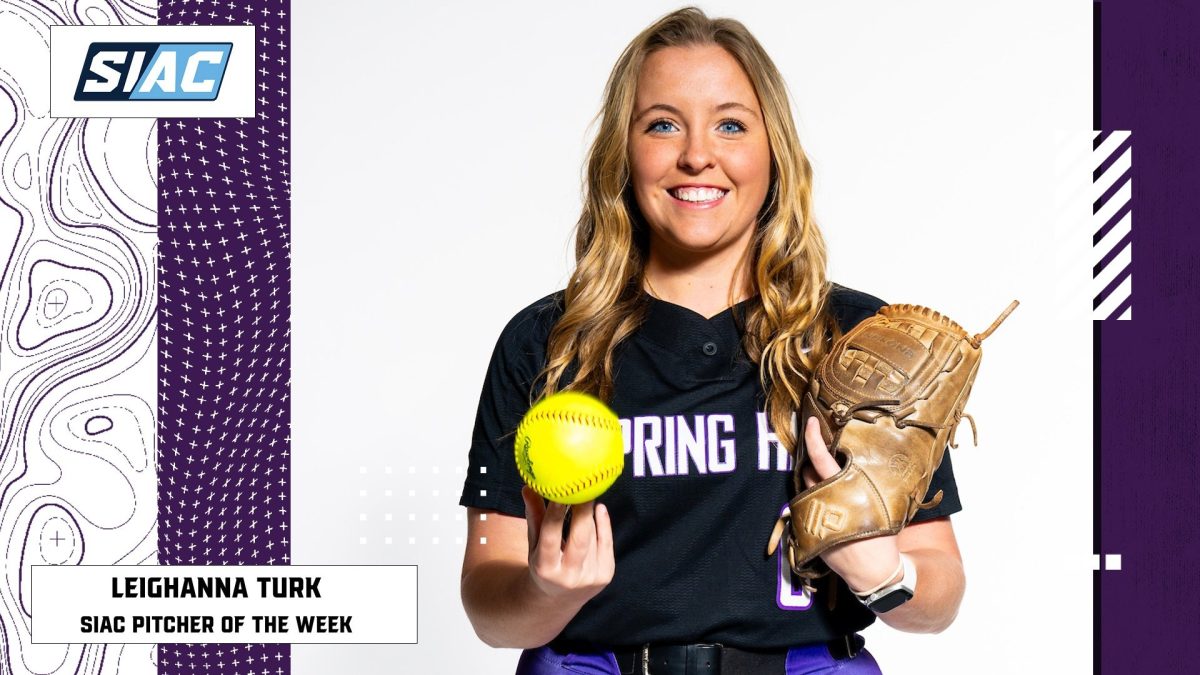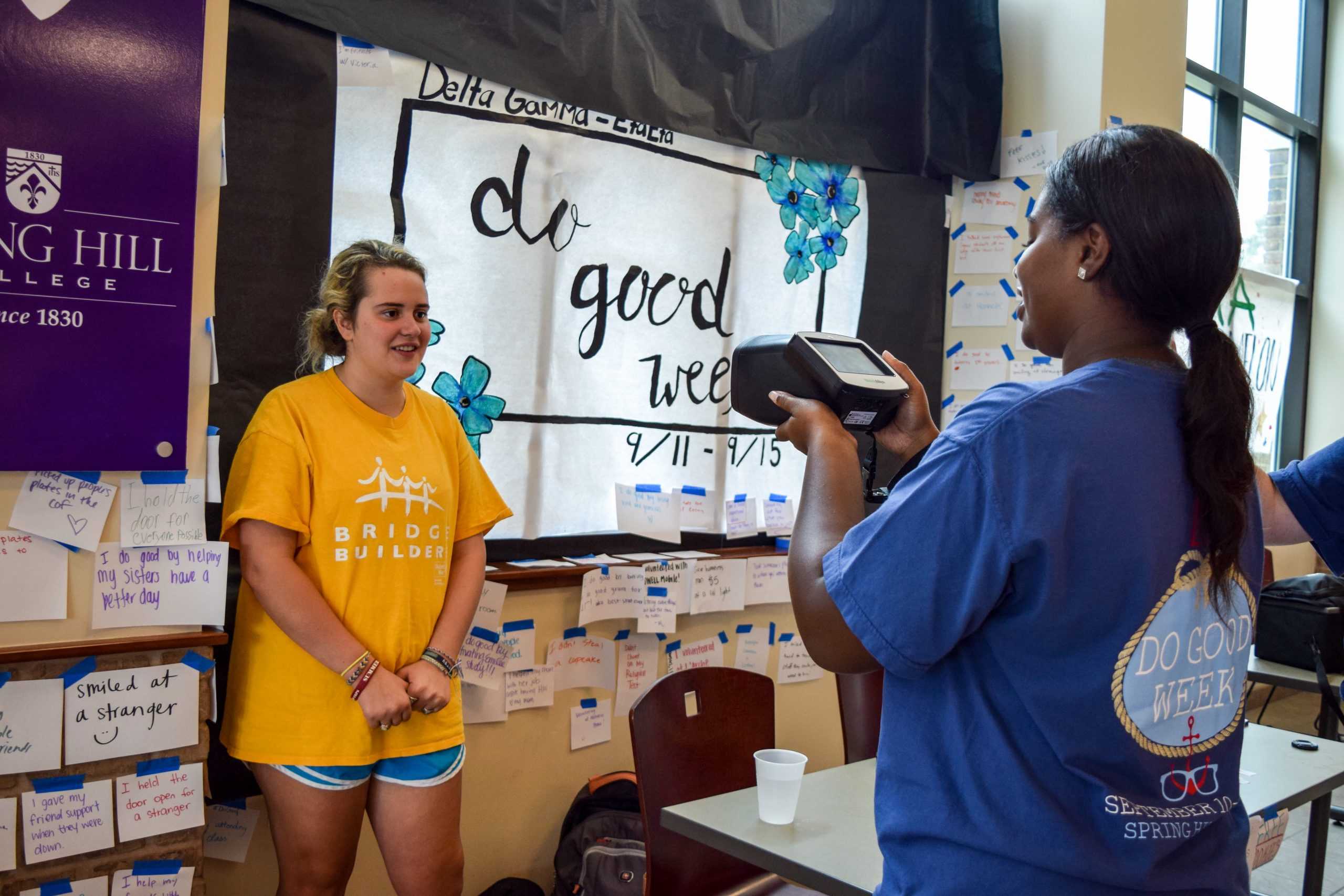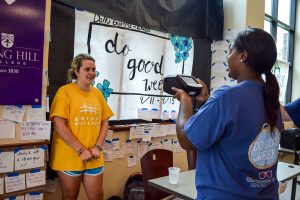On Sept. 15, the Eta Eta Chapter of Delta Gamma provided vision screenings to Spring Hill College students in the back of the cafeteria to end their annual “Do Good Week.”
Freshman student Lucia Reyes was one of the many students to take part in the screening. Although nervous as first, Reyes was very intrigued by her results. “I think the last time I got a vision screening was maybe two years ago, so yeah, I was surprised. I don’t even know what my results mean so I will be ‘WebMD’ing myself to figure it out,” said Reyes. Freshman Betsy Blumenfeld had similar comments regarding the screening, “I haven’t had a vision screening since elementary school, but it’s really cool that Delta Gamma is doing this. They did good!”
The vision screenings were performed with a Welch Allyn VS100S-B Spot Vision Screener. This special camera is able to detect a range of vision disorders such as amblyopia, myopia, hyperopia, astigmatism, and more. It also indicates whether referral to an ophthalmologist or another eye care specialist is necessary. Anyone can be tested, regardless of age, eye color or other common limitations, for a successful screening.
Sarabeth Hyde, vice-president of Foundation for Delta Gamma, said giving the free vision screenings was the perfect way to showcase their philanthropy. Not only does it benefit Service for Sight, but it also gives back to Spring Hill community. “Our recruitment advisor works at an eye care center here in Mobile, and one of our sisters works with the Foley Center to provide eye screens to children in the community. With that, we were able to pull together the resources needed for this event,” said Hyde. This is also the reason why Hyde did not feel the need to contact the Spring Hill College Wellness Center to perform the screenings. “I knew I had the resources within Delta Gamma to do it, so I didn’t feel the need to reach outside of my sorority,” she stated.
The American Optometric Association (AOA), recommends a comprehensive eye exam every two years for children and adults to maintain a lifetime of healthy vision. With more than 80 percent of the information received by students in the classroom being presented visually, according to AllAboutVision.com, a vision problem can negatively impact a student’s learning–especially if they are unaware of it.
































